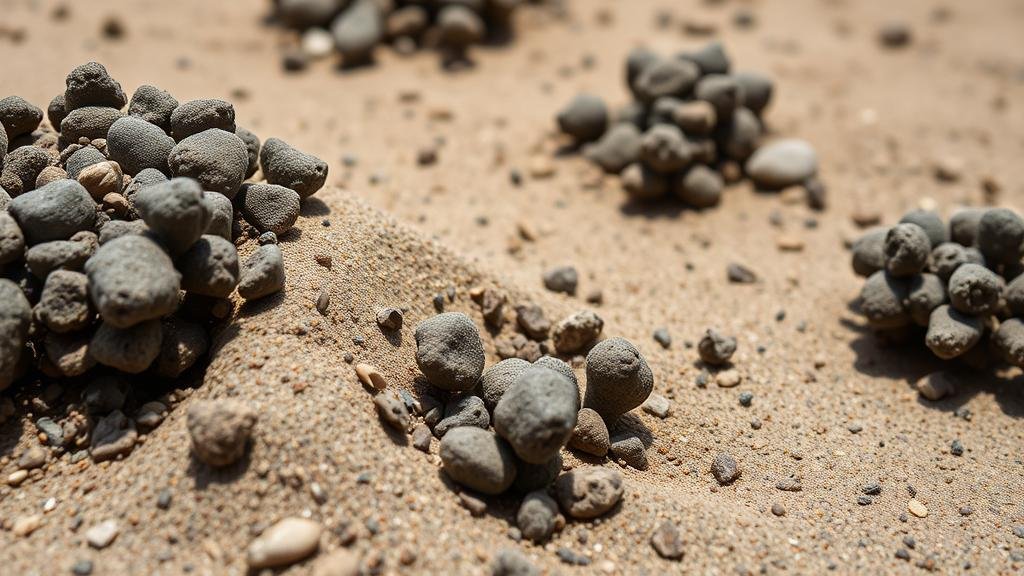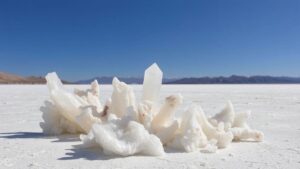Unearthing hematite concretions, or desert blueberries, in the sandy flats of the Jornada del Muerto.
Unearthing Hematite Concretions: The Desert Blueberries of the Jornada del Muerto
For both seasoned rockhounds and avid mineral collectors, the Jornada del Muerto in New Mexico offers a rare opportunity to discover hematite concretions, affectionately known as desert blueberries. These spherical formations are not only aesthetically intriguing but also serve as valuable specimens for geological studies. This article delves into the formation, characteristics, and practical tips for collectors interested in these geological treasures.
Understanding Hematite Concretions
Hematite concretions are dense, rounded clusters of iron oxide, primarily composed of hematite (Fe2O3). Their formation occurs through a process known as diagenesis, where iron-rich minerals undergo chemical changes in sedimentary environments. iron oxide precipitates out of groundwater, accumulating around a nucleus that creates the characteristic spherical shape.
In the Jornada del Muerto, these concretions can range from 1 inch to over 6 inches in diameter. Typically dark gray to black in color, some specimens exhibit a striking bluish sheen when exposed to sunlight, inviting collectors to explore their unique beauty.
Geological Context
The Jornada del Muerto is situated in the Basin and Range Province, characterized by diverse geological formations, ranging from ancient volcanic rocks to sedimentary deposits. The sandy flats of this arid region have undergone significant weathering, which has exposed the hematite concretions to interested enthusiasts. Found primarily in clay-rich deposits and isolated sandstone formations, these concretions serve as indicators of past environmental conditions.
Practical Tips for Collecting
For those eager to try their hand at collecting desert blueberries, consider the following tips:
- Know the Regulations: Before heading out, familiarize yourself with local collecting regulations. Ensure you have the necessary permits if required, as some areas may be protected.
- Proper Tools: Equip yourself with a rock hammer, chisel, safety goggles, and a durable bag for transport. Gloves are also recommended to protect your hands while handling rough specimens.
- Optimal Searching Time: The best time to search for hematite concretions is during dry seasons when the ground is less moist. Early mornings or late afternoons can enhance visibility and minimize heat exposure.
- Identification: Look for spherical formations with a smooth surface and a notable weight compared to surrounding materials. Often, youll find them partly buried, so gentle excavation methods are key.
Real-World Applications and Significance
The study of hematite concretions has implications beyond mere aesthetics for collectors. Geologists examine these formations to gain insights into ancient hydrological conditions and geological processes. Hematite itself is used in various industries, including metallurgy and pigment production.
Also, the unique characteristics of these concretions can also serve as indicators of past climate changes. For example, an abundance of hematite in a sedimentary layer may suggest historical arid conditions conducive to its formation. This aspect can be particularly fascinating for collectors interested in the intersection of geology and climatology.
Conclusion: Your Next Adventure Awaits
For rockhounds and mineral collectors, the hunt for hematite concretions in the Jornada del Muerto presents an exciting opportunity to engage with geology intimately. Whether you are driven by the thrill of discovery or the desire to enhance your collection, these breathtaking specimens can offer both aesthetic value and educational enrichment.
As you prepare for your collecting expedition, remember to respect the environment and abide by local regulations. With the right preparation and a sense of adventure, you can uncover the beauty of these desert blueberries while deepening your appreciation for the geological history they represent. Happy hunting!



